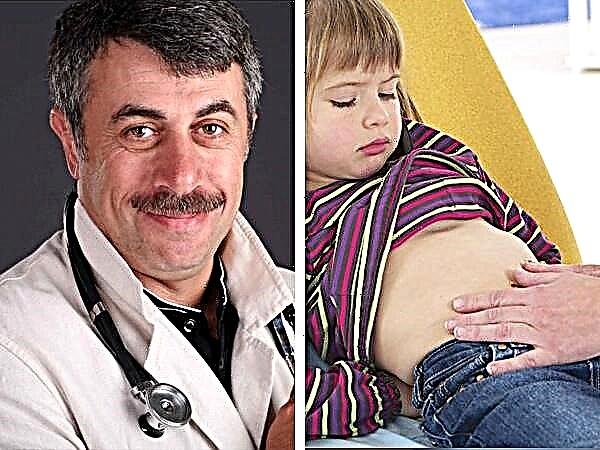
Hemorrhagic vasculitis is a disease that most often occurs in childhood. It can pose a serious threat to the life and health of a child.
What it is?
Hemorrhagic vasculitis in children is quite widespread, and therefore the establishment of such a diagnosis for a child should not be considered something out of the ordinary. The disease has several names - synonyms. It is often called Schönlein-Henoch disease or allergic purpura. Sometimes there is a name such as capillary toxicosis.
The disease belongs to hemorrhagic ailments. It is an allergic vasculitis that damages small blood vessels, resulting in a characteristic deep red rash. Most often, the disease affects children aged 5 to 14 years. In babies up to the age of three, the disease is diagnosed extremely rarely, only a few facts are known to medicine.


Causes of occurrence
Why hemorrhagic vasculitis develops is not known for certain, but studies have shown that the nature of the disease is mixed - infectious and allergic. A certain seasonal pattern has been noticed: more often children get sick in the cold and damp seasons - in autumn, winter and early spring. Since it has not yet been possible to establish the exact reasons, only the main predisposing factors are distinguished, which can lead to inflammation of the blood vessels and pinpoint hemorrhage in the skin.
- Infections. Most often, vasculitis occurs in a child who has recently suffered an acute infectious respiratory disease. Not all rhinitis or bronchitis results in hemorrhagic lesions. In patients with vasculitis, hemolytic streptococcus, Staphylococcus aureus, Escherichia coli were found in nasal and pharyngeal lavages. It is believed that the likelihood of hemorrhagic vasculitis is higher in children who have had an adenovirus infection, herpes viruses of the first and second types.
- Taking medications. Sometimes the disease develops while taking certain medications. There is no exact list of them, but most of the registered cases of the disease occurred while taking antibiotics of the penicillin group, the macrolide group, against the background of using non-steroidal anti-inflammatory drugs, drugs for arrhythmia. It is known that vaccines, which are administered during vaccination to children, can also be a provoking factor, however, there is a risk only when the vaccination is carried out almost immediately after an acute respiratory viral infection or flu.
- Allergy. Children with allergies are more susceptible to the disease. At the same time, the forms and types of allergies can be different - from food to cold allergies. And these reactions can also manifest themselves in different ways - from a runny nose to a rash and eczema.
- Other reasons. Identify external and internal factors that can presumably increase the likelihood of developing vasculitis in a child. This is freezing and hypothermia, or, conversely, too long exposure to sunlight, insect bites, skin injuries, a history of diabetes mellitus, the presence of malignant tumors, severe liver disease.
In 65% of cases, it is not possible to establish the exact cause of the disease. Doctors believe that for the development of the disease there must be a genetic predisposition. Geneticists do not reject this assumption.


How is it developing?
The disease is of immune origin. It is believed that an ailment occurs due to the fact that immune complexes are formed in the child's blood, the activity of certain proteins in the blood increases, whose task is to repel the attacks of foreign organisms - viruses, bacteria. Proteins, which are referred to as the complement system, are activated excessively and begin to move in the patient's blood.
At the same time, they one way or another begin to be deposited from the inside on the walls of small blood vessels (venules, capillaries and others), gradually causing their damage. In places of damage, local inflammation develops. The walls become thinner, flawed. They begin to deposit fibrin protein and thrombotic masses.
Not only the skin is affected, but also the gastrointestinal tract, as well as the kidneys and joints.

Kinds
The disease always has three periods - initial, acute and subsiding. It is on the severity of the clinical course that the classification is based.
- Rheumatoid or articular form - damage to the large joints of the legs, accompanied by swelling and punctate hemorrhages, while the functions of the joint itself are not disturbed.
- Dermatorheumatoid form (skin and articular in a complex) - a red dot rash appears around the joints of the hands and feet, on the inner thighs, as well as on the face and butt. The development of joint deformity is not excluded. Red blood points can also be found on mucous membranes.
- Dermatological (cutaneous) form - red dots are formed only on the skin, and more often on the arms and legs. More often it happens in children as an allergy, as well as after ARVI and flu.
- Abdominal (abdominal) form - pain around the navel, the child's skin is pale, the eyes sink, the children look very thin. Diarrhea is characteristic, in liquid feces, blood impurities in the form of streaks are possible. The development of abdominal hemorrhage is not excluded.
In terms of duration, acute vasculitis is distinguished, which lasts up to two months, and also protracted - lasting up to six months. Chronic forms of systemic vasculitis usually last more than 6 months.
By the nature of the course, three degrees of the disease are distinguished:
- easy - the rash is not extensive, the general condition of the child is satisfactory;
- average - a state of moderate severity, the rash is profuse, extensive, the joints are deformed, there are all signs of arthritis against the background of hemolytic vasculitis, the stomach hurts, erythrocytes can be found in the urine;
- heavy - the condition is severe, the rash is extensive, in some places they are combined with areas of necrosis, swelling of the throat, limbs, renal failure, a large amount of blood in the urine, gastric bleeding.


Separately, it is worth noting vasculitis of the umbilical vessels in newborns. In this case, the symptoms of punctate hemorrhage are observed in the area of the umbilical wound.
Sometimes parents call any of these ailments hemorrhoidal vasculitis. This is a misnomer. Hemorrhoidal veins (in the rectum) with systemic vasculitis usually do not suffer.
Symptoms and Signs
Allergic purpura in children usually begins with a rise in body temperature. The thermometer can show 37.0 degrees with a little, and 38.0 degrees and even higher. In some children, the temperature remains normal. You can guess about the presence of vasculitis by the very first and surest sign - a characteristic red rash. It is spotty, papules are usually small, if you press on them with your finger, they do not disappear anywhere.
Another important distinguishing feature is the relative symmetry of the rash. It occurs on both shins, on both thighs, on two hands, around two identical joints (for example, knees). Less commonly, the rash appears on the body. If the disease is difficult, necrotic foci and ulcers form in the center of the papules.


Joints hurt and suffer to varying degrees in 7 out of 10. Such lesions can be short-term, and after a few days everything goes away, or they can be similar to arthritis. In this case, they swell, hurt a lot, and their mobility is significantly limited. Joints can get sick at an early stage, or a little later.
The abdominal form of the disease is accompanied by the child's complaints of abdominal pain, while the rash may appear later, or it may develop simultaneously with the pain. The nature of the pain can be moderate or severe, resembling intestinal colic. Violations of the kidney function occur in every third patient. This can be determined by the appearance of blood in the urine.
Other internal organs are much less likely to suffer. Several cases of the development of hemorrhagic pneumonia were recorded, when a child had a cough with sputum containing blood streaks, as well as several cases of hemorrhagic meningitis, when a punctate hemorrhage occurred in the vessels of the cerebral membranes.
Possible complications
The most dangerous consequence of hemorrhagic vasculitis is persistent and irreversible kidney damage, manifested by renal failure. Internal bleeding is also dangerous - stomach, pulmonary, cerebral. The more blood loss from the affected vessels, the worse the prognosis. But modern medicine can prevent many complications, reduce the risks of their development, even with a severe course of the disease.
Lethal outcomes are possible, but mainly with rapidly developing forms of severe vasculitis, the so-called "fulminant".


Diagnostics
The diagnosis and treatment is carried out by a rheumatologist. He will be assisted by a nephrologist if the child's kidney function is impaired, a gastroenterologist and a surgeon if the form of the disease is abdominal. Establishing a diagnosis does not make a big deal on the external clinical picture, but confirmation and features are determined after the following studies.
- Hematological tests - a general blood test, in which there is an increase in the content of leukocytes and ESR, an increase in platelets, a large number of eosinophils, as well as a biochemical blood test. They also carry out a coagulogram - an analysis for blood clotting factors to determine fibrin and a number of other characteristics.
- Urine examination for the presence of blood, cylinders, protein.
- Stool examination for hidden blood.
Also do ultrasound of the kidneys, stomach. With a severe form of the disease, a biopsy of the skin and kidneys is performed.

Treatment
A child with acute forms of hemorrhagic vasculitis is shown bed rest and a special diet - you cannot eat anything that, even in theory, can cause an allergic reaction. Water and salt are given in limited quantities.
For any form, blood thinners are indicated, for example, "Pentoxifylline", as well as activators of fibrin breakdown - nicotinic acid. Can be assigned "Heparin". Such treatment helps to establish normal blood circulation, eliminate the likelihood of microthrombus formation.
For joint pain, recommend anti-inflammatory local treatment. With kidney damage, hormonal drugs are used - glucocorticosteroids, cytostatics.
Despite the fact that the disease is generally considered allergic, the use of antihistamines is considered ineffective.
But they are recommended for children with allergies, so as not to aggravate their condition, along with enterosorbents.

Predictions for hemorrhagic vasculitis are ambiguous: mild forms pass on their own, almost "on their feet", without any consequences for the baby's health. With a severe and rapid form, death can occur within a day. Postponed severe forms may require lifelong treatment, which will include, among other things, the need for a donor kidney transplant if your own refuses.
Prevention of hemorrhagic vasculitis is quite difficult, because the true causes are not obvious. Parents are advised to treat the child with diseases of the ENT organs in time, to ensure that he does not have helminthic invasions. You should also avoid taking medications without a doctor's prescription and contact with strong allergens.

Reviews
According to parents, hemorrhagic vasculitis in children requires rather long-term treatment - many spent 4 to 8 weeks in the hospital with the child until the manifestations of the disease disappeared completely.
The main thing, mothers say, is to comply with all the doctor's recommendations, and not only during therapy, but also after it, because life after vasculitis is closely related to restrictions on nutrition and medication.

More information about the symptoms of hemorrhagic vasculitis can be found in the video below.



